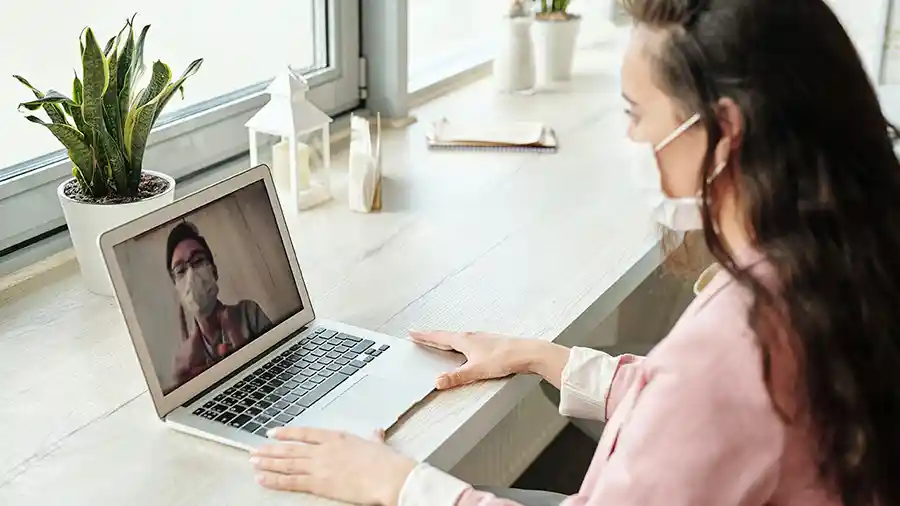Unforeseen events often have a lasting impact on the way we view the world and the way we interact with it, and the current COVID-19 pandemic will not be an exception. This is the largest health pandemic of this generation and has caused new and unique challenges that will require innovative and technological responses. Nowhere has this become clearer than in healthcare, where teams are on the front lines of the fight against the virus.
For example, when an individual normally needs non-emergency care, they schedule time with their doctor, arrive, and wait at the doctor’s office and then proceed to an exam room. COVID-19 has exposed flaws in this system. The more time people are together in small areas, especially if they are feeling unwell, the more likely they are to catch and transmit illness. So, we must find ways to care for patients outside of the hospital or clinical setting.
This crisis has exposed issues with care access and how social determinacy and socioeconomic status affect how care is received. Less wealthy and more rural areas are underserved and continue to struggle to receive the care they need. While this is not a new problem, it is one that has been amplified under the current conditions.
COVID-19 has also exposed misaligned incentives in the traditional care model. Insurance companies currently reimburse more for in-office visits than they do for other kinds of services. This creates a relationship between insurers, providers, and patients that does not necessarily work for the benefit of everyone.
The situation is serious, but there are also promising solutions. One such solution is telemedicine, an older technology, existing in various formats over the decades, but one that has greatly expanded in the internet age. Most people now have access to a computer or mobile device that will allow them to engage in telehealth. Instead of traveling to your general practitioner to talk about a health issue, you visit them virtually. In the age of COVID, this means less exposure to other patients, ultimately reducing the likelihood of contracting the virus.
Another important benefit of telemedicine is that it increases the range where care can be provided. In rural and underserved communities this means getting care in the home instead of having to drive long distances, take time off work, or cause other interruptions in life. It also means that patients are more likely to schedule visits rather than let health issues worsen and continue.
Normalizing telehealth, virtual care, and alternative methods for insurers and providers is critical to realign their incentives around reimbursement. If these new services become standard practice, then reimbursements to providers can begin increasing to levels on par with standard in-office visits. Data has also shown that in-home care can be just as effective as an office visit, but up until now, only about 1 in 10 people utilize telehealth services. However, that number is expected to increase significantly over the course of the current pandemic.
Preventive care is possibly the most important long-term solution for a healthier, more prepared society. Treating the source of an issue is better than treating the symptom. For healthcare that means fewer emergency services and a healthier populace overall. Compared to the traditional sick care model, preventive care is less costly and more effective; however, from the consumer perspective, it is difficult to implement.
Consumers have shown in polling that healthcare is the number 1 voter issue in the U.S., especially since on average the U.S. spends more on healthcare than any other country. Not only do we spend the most on care, we spend the most on sick care as opposed to other countries that spend much more on preventive care. Preventive care is the answer to reducing cost over time, but for average consumer simply getting costs down is the primary objective.
The main challenge for creating a shift to preventive care will be getting consumers to understand how their life choices will influence their health. Simply showing a patient’s health data and telling them what they need to do will not be enough to get them to change their lifestyle. Many people are paralyzed by the amount of seemingly conflicting health information they receive and feel that their best option is to take no action at all. It is also unreasonable to expect every person to become an expert in health and wellness, after all, this is the main reason we visit a doctor. We will need to find a way to complement data with technology in a manner that can show people what is happening to their health in real-time, without requiring them to tackle the complex facts and information.
The most likely outcome from the current COVID-19 crisis is a “new normal”. It will include new complications, but also new solutions. It is probable that new incentives for payers will be created in response to this pandemic that will have lasting change on how we receive care. Automation with artificial intelligence and machine learning must be leveraged to create a better future for healthcare. We can expect to see an increase in telehealth, preventive care, work from home options, and other innovative solutions.
Although COVID-19 has created tremendous pain and trauma worldwide, the healthcare industry’s response to it can have a lasting positive impact. The changes that will be implemented to aid in this crisis will hopefully initiate transformation at the base level of the entire healthcare system in the U.S. to ultimately reach a solution that reduces cost and increases health in the U.S. and around the globe.
Check out our latest podcast where we discuss this topic further with special guest Taralyn Romero, VP of Innovation at Cigna.







